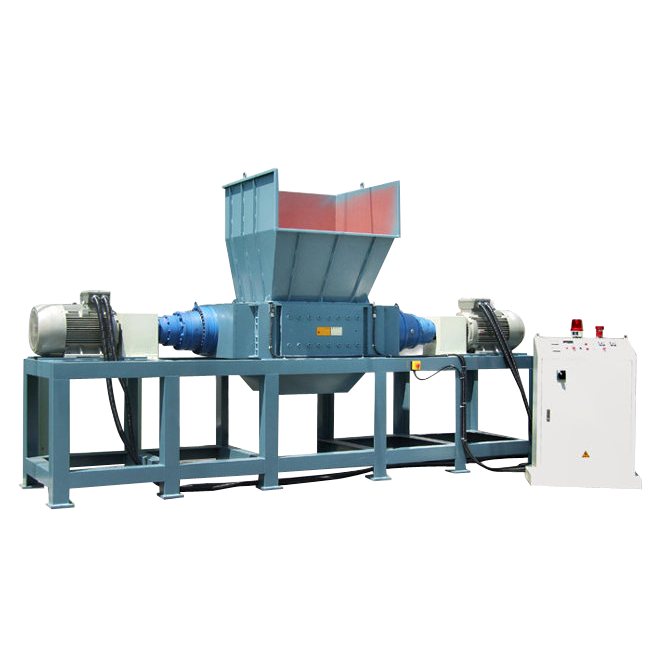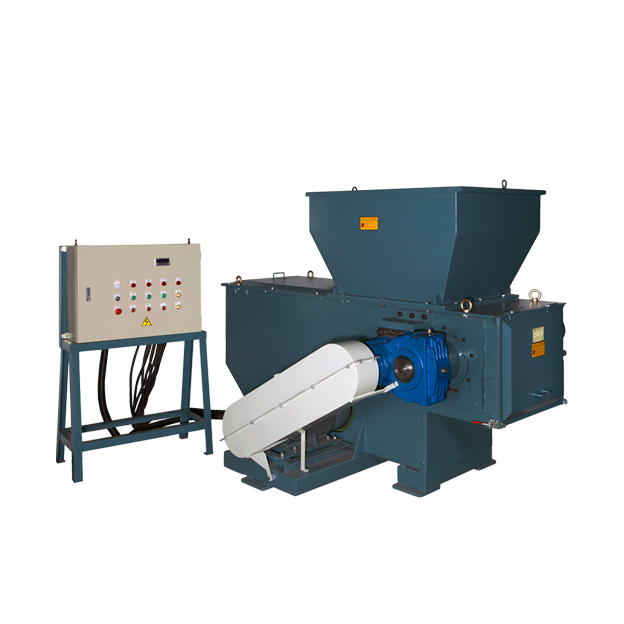How to Choose the Right Industrial Plastic Shredder Machine

Industrial plastic shredding transforms bulky plastic waste, from packaging and film to rigid containers and e-waste, into uniform flakes for recycling, reuse, or disposal. A plastic shredder, or plastic shredder machine, is a heavy-duty device equipped with sharp rotating blades that cut, tear, and grind plastic materials into smaller, manageable pieces. Common in recycling plants, manufacturing facilities, and waste management operations, these machines boost material uniformity, streamline downstream processing, and support sustainable resource management across a diverse range of industries.
Why the Right Plastic Shredder Matters

-
Optimize Throughput and Recycled-Material Quality
Selecting a shredder sized to your input volume and polymer types ensures consistent flake size and uniformity. Uniform output accelerates sorting, washing, and pelletizing downstream, boosting recycling rates and material resale value. When your machine reliably meets throughput targets, operations stay on schedule and ROI climbs.
-
Reduce Wear, Downtime, and Maintenance Costs
Blades tailored to specific plastics stay sharper longer and resist premature dulling. A properly matched drive system minimizes motor strain, bearing wear, and component fatigue. Fewer breakdowns translate to less unplanned downtime, predictable maintenance intervals, and lower labor and replacement parts expenses, reducing total cost of ownership.
-
Enhance Operational Safety and Stability
Robust frame design, vibration damping, and secure mounting keep the shredder stable under high torque, protecting bearings and supports. Safety interlocks, emergency stops, and overload protection prevent accidents and damage from jams or material surges. Well-designed guards and controlled access during loading and service foster a safer work environment and help maintain regulatory compliance.
Overview of Plastic Shredder Types
Industrial shredding breaks large plastic items into uniform flakes for easier recycling, reuse, or disposal. Choosing the right machine boosts efficiency, reduces downtime, and improves output quality. Below are the core shredder styles and their ideal applications:
1. Single-Shaft Shredders
A single-shaft shredder uses one high-speed rotor spinning against fixed knives. Adjusting blade-to-knife clearance controls flake size.
- Ideal for: Film, stretch wrap, mulch film; textile fibers and nonwovens; light packaging (poly bags, pouches)
- Benefits: Fine, uniform flakes at high RPM (Revolutions Per Minute); quick blade and screen swaps; lower capex and footprint
- Considerations: Prone to jams with bulky or rigid items; limited torque for thick plastics
2. Dual-Shaft Shredders
Dual-shaft machines employ two contra-rotating shafts with interlocking knives. They tear dense materials at low speed and feed themselves through the cutters.
- Ideal for: Rigid plastics (PVC pipe, HDPE drums); e-waste (circuit boards, housings); automotive parts and large containers
- Benefits: High torque resists jams; self-feeding cuts manual handling; heavy-duty frame extends service life
- Considerations: Lower hourly throughput; higher capex and floor space requirements
3. Four-Shaft (Quadrant) Shredders
Four-shaft systems combine two pairs of shafts running at different speeds. The first pair rips apart materials; the second refines flakes to size. However, they often require more complex maintenance and a higher initial investment.
4. Granulators & High-Speed Mills
Granulators and mills spin flakes at very high RPM against screens to produce uniform pellets. They often follow shredders in the processing line. They feature consistent pellets for extrusion or molding, as well as a compact footprint.
Selecting the right shredder means balancing material type, daily tonnage, maintenance capacity, footprint, and budget. Single-shaft units excel on flexible, lightweight plastics; dual-shaft machines handle dense, rigid waste; four-shaft systems manage varied loads with fewer interruptions; and granulators deliver final-size precision. Consider your feedstock profile, throughput targets, and service capabilities to pinpoint the best configuration.
For an in-depth look at knife geometries, screen options, and customization tips, see the [Guide to Plastic Shredder Machine].
Key Factors When Selecting a Plastic Shredder
1. Throughput (kg/hr)
Match the shredder capacity to your daily tonnage. Undersized units stall and cause backlogs; oversized machines waste energy and capital. Review vendor specs for continuous vs. peak throughput to ensure you hit your target without bottlenecks.
2. Material Compatibility & Blade Quality
Identify feedstock types—film, rigid containers, e-waste—and choose blades made from tool-grade alloy steel or carbide. Hardened edges resist abrasion and preserve sharpness. Proper blade geometry prevents clogging and delivers uniform output.
3. Automation Level
Assess how much hands-on control you need. Basic systems require manual feed and speed adjustments. Advanced models offer programmable logic controllers (PLCs), automatic feed rollers, and remote monitoring. Higher automation reduces labor and maximizes uptime.
4. Safety Features
- Emergency Stop: Instantly cuts power to halt rotation.
- Overload Protection: Sensors detect torque spikes and pause the motor to prevent damage.
- Interlock Guards: Shield moving parts and lock access doors during operation.
5. Power Consumption & Operating Costs
Compare motor efficiency ratings (IE2, IE3). High-efficiency drives save electricity over time. Factor in bearing lubrication schedules, hydraulic oil changes, and the cost of replacement screens or blades to calculate true operating expenses.
6. Maintenance Requirements & Durability
Look for quick-change blade systems and accessible service panels. A robust frame with vibration damping extends component life. Ask about mean time between failures (MTBF) and average downtime per year to set realistic maintenance budgets.
7. Motor Power & Torque
Select a motor that balances RPM and torque for your material. High-speed motors suit flexible plastics; high-torque drives excel with rigid waste. Verify gearboxes and drive belts are rated for continuous load to avoid premature wear.
FAQ on Selecting Your Plastic Shredder
Q1: Should I choose a single-shaft or dual-shaft shredder?
A single-shaft shredder runs at higher speeds and produces fine, uniform flakes, making it ideal for thin, lightweight plastics such as film, wrap, paper, and nonwoven materials. Its simple design and adjustable blade clearance let you dial in the output size and swap screens quickly. However, it can struggle with bulky or rigid items. A dual-shaft shredder operates at lower RPM with two contra-rotating shafts, delivering high torque to tear apart heavy, rigid materials like pipes, containers, and e-waste. Its self-feeding action reduces manual loading and minimizes jams, but typically yields lower throughput and comes with a larger footprint and higher upfront cost.
Q2: What safety features should I look for in a plastic shredder?
Safe operation depends on built-in protections and proper guarding. Look for:
- Emergency Stop Button: Cuts power immediately in case of a malfunction or hazard.
- Overload Protection: Detects torque spikes or jammed blades and shuts down the motor to prevent damage.
- Interlock Guards: Lock access doors and feed hoppers while the machine is running, ensuring blades can’t be reached during operation or maintenance.
Conclusion and Next Steps
Choosing the right industrial plastic shredder means matching machine type and specifications to your material profile and processing volume. Single-shaft models deliver fine, high-speed shredding for films and light packaging, while dual-shaft units offer the torque needed for rigid plastics and bulky waste. Balancing throughput, power, safety, and maintenance factors ensures optimal performance, lower costs, and a safer workplace.
For tailored advice and custom shredding solutions, trust the experts here at WEI SHENG. Our team will assess your needs and recommend the ideal setup to maximize efficiency and ROI. Contact us today.

